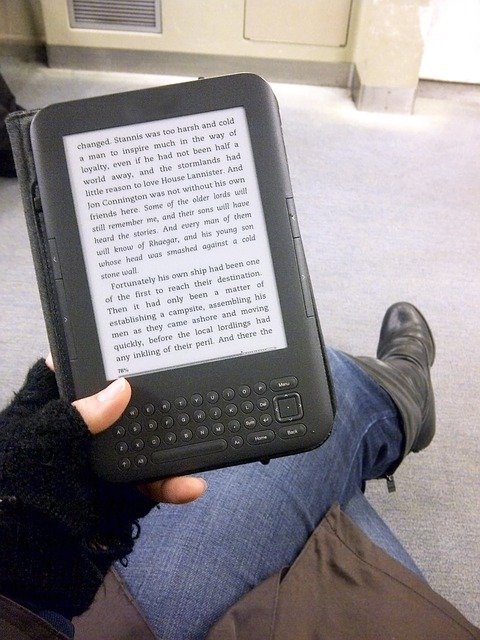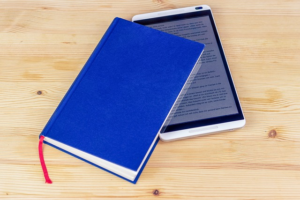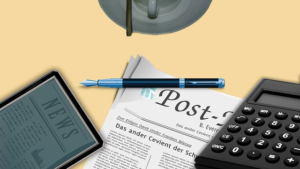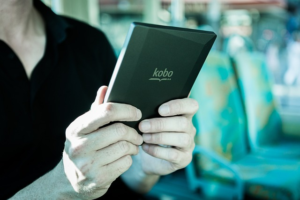
Recommended by Our Editors
Step away from the monitor and give your eyes a rest. Ebook readers, also called ereaders, rely on E Ink screens to let you read for long periods of time without the brain-burn that comes from a radiant LCD or OLED screen. They have very long battery life and look terrific in sunlight. Amazon’s Kindles dominate the ebook reader market in the US, but if you’re shopping around, it’s a good idea to look at models from Kobo, Nook, and Onyx. We’ve reviewed them all.
eReader Screen Type and Size
Basic ebook readers use monochrome E Ink screens to display text. E Ink, or digital ink (often manufactured by the E Ink company), looks a lot like paper, and it’s easy on your eyes when reading for long periods. On the least expensive models, it’s not backlit, so you’ll need light to see the text, just as you would with a printed book. But most ebook readers now include edge lighting that lets you see in the dark. With each model, you can vary the intensity of the brightness from barely there to flashlight-bright. On the lowest settings, you can read in the dark while your partner sleeps peacefully next to you.
In all cases, E Ink is much easier to read in bright sunlight, while color touch screens on tablets tend to wash out, and their glossy displays can show distracting reflections.
Most E Ink readers were 6 inches for many years, but the panel sizes are slowly growing. The latest Amazon Kindle Paperwhite and Kobo Libra 2 have 7-inch displays; the Kobo Forma and Sage have 8-inch screens; and Onyx sells larger-format readers up to 13.3 inches. I’ve found that you start to have balance issues with one-handed reading when a model goes above 7 inches.
The Best eReader Deals This Week*
*Deals are selected by our commerce team
Screen resolutions and quality also vary. The lowest-priced Kindles use 167ppi displays that look rough and jaggy compared with the 300ppi displays on most other ebook readers. E Ink also keeps improving its screens’ contrast and refresh rate. The new Carta 1200 technology, used in Amazon’s latest Paperwhite and Kobo’s Elipsa, Libra 2, and Sage, has noticeably faster page turns and a bit better contrast than even the previous 300ppi Carta displays.
If you haven’t updated your ebook reader in many years, you’ll be stunned at how much more responsive the latest E Ink readers are. Frequent, startling screen flashes are really a thing of the past; the screens flash much more subtly, much more quickly, and much less frequently.
Kobo Clara HD
(Photo: Zlata Ivelva)
The Best Color eReaders
If you need to read more than books, tablets with color screens offer a bevy of other benefits. Magazines and comic books look great on larger tablets. Even lower-cost tablets like the Amazon Fire 7 can browse the web, stream video from Netflix, Hulu, or other sources, play music, and run apps. Because of its high-quality screen and general power, though, we recommend the base-model iPad for most people trying to read rich, full-page color content.
In 2020, we saw a breakthrough in color E Ink displays, with several readers appearing based on the E Ink Kaleido or E Ink Kaleido Plus technologies. We’ve tested two of them, the Onyx Boox Nova3 Color and the PocketBook InkPad Color, that show some of the exciting possibilities of color E Ink. Unfortunately, we can’t recommend them yet; the screen technology is relatively dim, with low full-color resolution and occasional ghosting. LCD tablets are far superior.
The Best eReaders for the Beach
If you like to read in the bath, by the pool, or on the beach, you might want to consider buying a waterproof ebook reader. You have several options. The Amazon Kindle Oasis, the latest Kindle Paperwhite, and the Kobo Forma, Libra 2, and Sage are all rated to withstand submersion in water to some degree. The Kindle Oasis and the Kobos have page turn buttons so you can easily flip between pages when your hands are too wet to use a touch screen.
The Best eReaders for Taking Notes
All ebook readers let you highlight or tag particular phrases for later reference. Some have digital pens that let you take notes directly on the screen. The Remarkable tablet line, the Kobo Elipsa, the Kobo Sage, many Onyx Boox tablets, and, of course, the iPad line all support pen input. In general, they let you annotate on PDFs and other kinds of documents, plus take freehand notes on a blank page. The Onyx Boox Note Air 2 is our favorite E Ink tablet for pen use because of its paper-like feel and strong document format support.
The Remarkable 2 has a passionate following and is the best tablet purely for note-taking. It isn’t a good ebook reader, though, because it supports only the PDF and EPUB format books. That means that books from public libraries and from many online bookstores are not an option.
Barnes & Noble Nook GlowLight 4
(Photo: Sascha Segan)
The Best eReaders for Audiobooks
Sometimes you’d rather listen than read. Sometimes you’d like to read and listen at the same time. Kindles can now connect to Bluetooth headphones to play Audible audiobooks. Many Amazon books will synchronize with Audible audiobooks on Kindle ebook readers. Kobos use a proprietary audiobook format. Onyx ebook readers have built-in speakers and the ability to use multiple audiobook apps.
Oddly, Amazon saves its slickest audiobook feature, Immersion Reading, for its Android app, which means you need an Onyx ebook reader to use it. That feature synchronizes words displayed on the page while also narrating through audio.
What Kind of Wireless Connection Does Your eReader Need?
An always-on cellular radio lets you buy and download books from anywhere, over the air, for free (aside from the cost of the book itself, of course). Most devices offer Wi-Fi as the base level wireless connection—at a much lower cost—with 4G cellular data only available as part of a more-expensive model.
As long as you don’t mind waiting until you’re near a hotspot to shop for new books, Wi-Fi should work for you. A select few may still prefer to pony up for cellular to buy a new book while, say, on a long camping trip or lounging at the beach.
Internal storage capacity is not much of a concern. Every ebook reader you can buy today can store more than 1,000 books, and some have room for thousands more. And if you have more books than that, each of the major vendors offers cloud storage, letting you download books to your device whenever you need them, assuming you’re connected to a Wi-Fi hotspot (or anywhere you have a cell signal, if you have a 4G-capable model).
Where Do You Get Your Ebooks?
The ebook reader you choose determines which ecosystem you can use.
Amazon, Barnes & Noble, and Kobo all use copy protection on most of their books, which prevents you from reading titles on other brands’ ebook readers. It’s possible to remove the copy protection, but you may also remove features such as formatting and character summaries. It’s also gotten much harder to strip the protection specifically from Amazon books in the past year or two. Onyx ebook readers can run all of their competitors’ Android apps, which means you can read content from every platform on them.
For public library lending, Kobo ebook readers let you install the popular library app Overdrive as their native store, which is very convenient. Amazon sends you through the library’s website to pick books that get pushed to your device; Onyx has you load a specific library app.
Amazon has its own Prime Reading(Opens in a new window) library, part of its Prime subscription service. For kids, the Amazon Kids+ subscription service contains a lot of children’s books and starts at $2.99 per month. You get a free year of it when you buy the Kindle Kids Edition.
Book selection, size, and pricing vary from store to store. Books by big publishers generally appear on the Amazon, Barnes & Noble, and Kobo stores. But Amazon also has exclusive authors and imprints that only appear on its store. Many of them are self-published and not very good, but Amazon definitely has the advantage in terms of quantity.
For more, see our article on how to put free ebooks on your Amazon Kindle. And for an in-depth comparison of supported formats across various ebook readers, check out Wikipedia’s article comparing ebook formats(Opens in a new window).
Amazon offers a number of different Kindles
(Photo: Zlata Ivelva)
How Much Should You Spend on an eReader?
If you’re just reading mainstream fiction or nonfiction books, the sweet spot right now is $100 to $150 for a good Amazon, B&N, or Kobo device. You can get a low-end model that costs less or a larger model that costs more, but the ebook readers at this price point tend to have the best balance of screen quality and size for most books.
Onyx’s tablet-sized readers cost considerably more than other ebook readers, but they’re also much more powerful, letting you run multiple reading apps, annotate PDFs, and read large-format documents on big screens. We see these as primarily for academics, lawyers, people who read medical or scientific journals, and others who read for work or school as well as for fun.
With that in mind, these are our favorite dedicated ebook readers you can buy today. If you’re getting a Kindle, check out our Amazon Kindle tips every reader needs to know. And if you’d rather do your reading on a bigger screen or one with color, head over to our top tablet picks.


